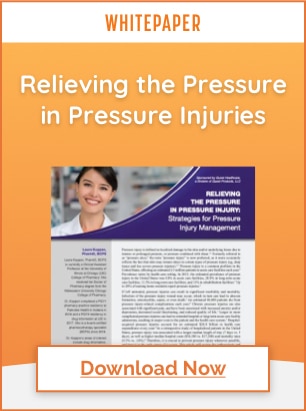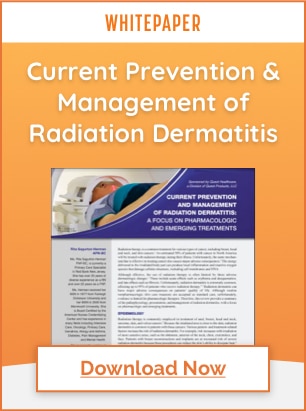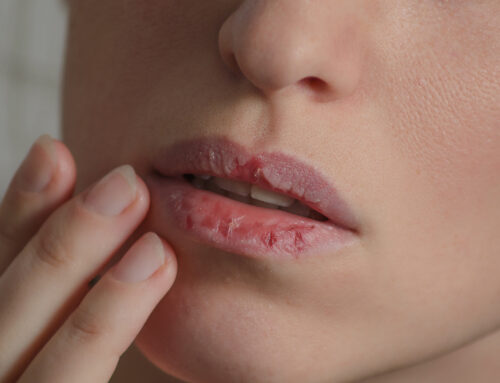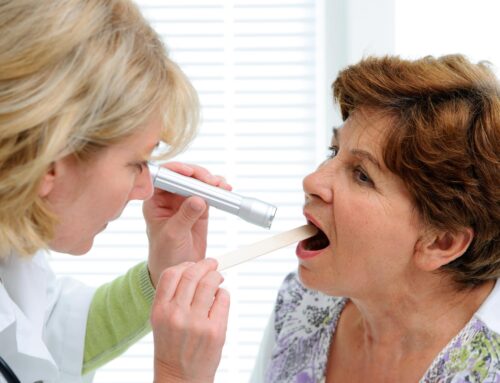
Xerostomia in The Elderly
Dry mouth, also known as xerostomia, refers to a condition in which the salivary glands in the mouth don’t make enough saliva to keep the mouth wet. It can be a chronic condition or caused by a number of diseases such as Sjogren’s Syndrome, Scleroderma, HIV / AIDS, and Diabetes. Xerostomia can also be a side effect of radiation, chemotherapy, or over 1,800 medications.
The Demographic of Xerostomia Sufferers
While twenty percent of the U.S. population reports dry mouth, the percentage of those that suffer increases with age. Forty percent of the population over 55 experience xerostomia, with eighty-six percent of sufferers experiencing symptoms every day. Additionally, women suffer from xerostomia at a higher rate than men.
Negative Side Effects of Xerostomia
Xerostomia can lead to numerous negative side effects including:
- Bad breath
- Pain in the throat, tongue, gingival, or dental ridge
- Changes in taste, speech, and swallowing
- Tingling, burning, or stickiness in the mouth
- Cavities
- Gum problems
- Ulcerations
The Role of Saliva
Saliva is a fluid that contains water, electrolytes, mucus, and enzymes that are integral components to oral health.
The protective role and benefits of saliva include:
- Chemical digestion
- Lubrication
- Dilution
- Thermo-regulation
- Antimicrobial actions
- Amylase lipase
Without these protective functions of saliva that include antimicrobial activity, control of pH, and removal of food debris from the oral cavity, the risk of developing Candida infection and dental cavities increases.
Signs and Symptoms of Xerostomia in the Elderly
Diagnosis of xerostomia requires careful evaluation of signs and symptoms, with clinical extra-oral and intra-oral examinations, assessment of salivary gland function, and in some cases biopsy of minor salivary glands. Examination of the entire oral cavity is an important part of the assessment.
In an individual with xerostomia, the mucosa may be dry and sticky, with the saliva appearing stringy or foamy. There may be little or no pooled saliva in the floor of the mouth, and it may be difficult to express saliva from the ducts of the major salivary glands. Dental cavities may be found.
Individuals with xerostomia complain of problems with eating, speaking, swallowing, and wearing dentures. They may experience difficulty in eating dry foods, wearing dentures for a long period of time, or speaking without taking frequent sips of water. Interference with eating may occur because of changes in taste and difficulty eating spicy or acidic food.
Common Issues Resulting from Xerostomia in the Elderly
Xerostomia can cause significant disorders, pain, and impaired quality of life in the elderly population. Common issues include loose dentures, cracked lips, extensive tooth damage, appetite wanes, and weight loss as food becomes tasteless and hard to eat.
Management of Xerostomia
There are numerous ways to manage xerostomia in the elderly population including prescription and over-the-counter medications as well as lifestyle changes such as:
- Avoiding mouthwash that contains alcohol
- Using a humidifier at night
- Breathing through the nose, not the mouth
- Avoiding over-the-counter antihistamines or decongestants
- Using XyliMelts®
XyliMelts® and Xerostomia
There are many over-the-counter medications on the market for dry mouth. This includes rinses, sprays, lozenges, soft chews, and toothpastes. However, these options often fall short of XyliMelts®, a patented adhering disc that works up to 8 hours at night and is proven to reduce morning dryness.
XyliMelts® are an all-natural oral adhering disc that slowly dissolves, releasing 550 mg Xylitol (oral lubricant). XyliMelts® are the only patented “oral adhering disc” that sticks to the gums and encourages saliva production for up to 8 hours while sleeping and helps suppress harmful bacteria that flourish in dry mouths.
A study in the International Journal of Dental Hygiene shows participants using XyliMelts® experienced a significant improvement in subjective wetness (P < 0.001) and a significant decrease in perceived morning discomfort (P < 0.02) within 1 week of use of the discs.

Request XyliMelts® samples for your patients today.
Request an Educational In-Service
Are you interested in learning more about this topic, among others, and educating those within your healthcare facility? Request a virtual 20-30 minute Educational In-Service for your team today, and we’ll even have lunch delivered to your office!
Disclaimer: The material contained is for reference purposes only. Quest Healthcare, A Division of Quest Products, LLC, does not assume responsibility for patient care. Consult a physician prior to use. Copyright Quest Healthcare, A Division of Quest Products, LLC.
Sources:
- Ship JA Pillemer SR Baum BJ; Xerostomia and the geriatric patient. J Am Geriatr Soc. 2002; 50: 535-543
- https://www.intechopen.com/books/saliva-and-salivary-diagnostics/functions-of-saliva
- https://www.dentalhealth.org/dry-mouth
- Int J Dent Hygiene 10, 2012; 118–121, DOI: 10.1111/j.1601-5037.2011.00532.x; Burgess J, Lee P. XyliMelts time-release adhering discs for night-time oral dryness.




![[Live Webinar] Neurogenic Bowel Dysfunction in Multiple Sclerosis](https://www.questhealthcare.net/wp-content/uploads/2025/02/325-Quest-Healthcare-Speaker-Session-1-500x383.png)


